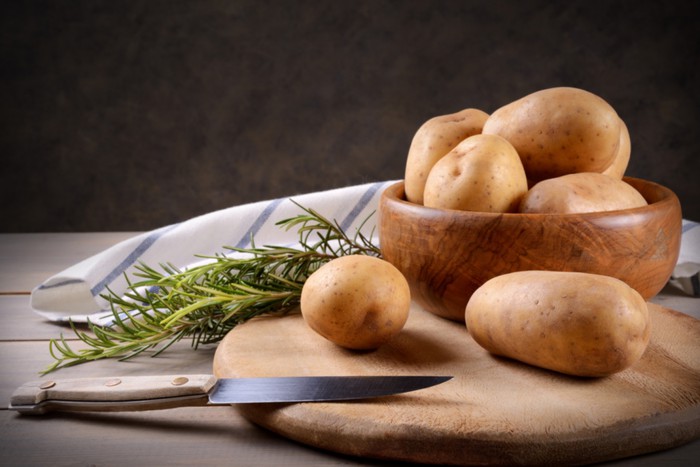The mighty potato has always been an aid to the endurance athlete and it has more benefits than we realise. All you have to remember is how you prepare your potato-based meal and what kind of potatoes can benefit you when. – BY SALOME SCHOLTZ, REGISTERED DIETICIAN
It may come as a surprise to hear that one medium-sized boiled potato with the skin contains about 45% of the daily recommended value of vitamin C, and as much or more potassium than bananas, spinach or broccoli. It also accounts for 10% of the daily value of vitamin B6 and trace amounts of thiamin, riboflavin, folate, magnesium, phosphorous, iron and zinc.
Regrettably, however, we tend to consume potatoes as oily fries, or potato chips, and baked or boiled potatoes are generally dressed in fats like cheese sauces, butter or sour cream. To get the most out of the power of this delicious veggie, it’s important to get rid of the frills. Instead, we can focus on the three types of potatoes that we South Africans are used to, and what athletes need to note if they’re fuelling for a long run or ride.
Keeps You Going
Most of us are familiar with white (or yellow) potatoes, new (baby) potatoes and sweet potatoes. All of these varieties contain roughly the same amount of vitamins and minerals, but potatoes differ from one another in their starch content and type, which affects not only how fast they’re digested, but how they act when cooked.
• Boiling usually results in a lower glycaemic index (GI), since starch can bind with water. The dry heat of baking, on the other hand, lowers moisture and concentrates the sugar in the potato. Keeping the skin on will also contribute to a lower GI as the fibre in the skin helps to decrease the rate at which the sugar is absorbed into the blood after digestion.
• White potatoes, whether you have them mashed, baked, as fries or potato chips, have a high GI, which means that their carbohydrates are quickly turned into sugar, which elevates your blood sugar levels quickly after they have been consumed.
• New potatoes are any potatoes which are gathered young, just before their sugars are completely transformed into starch. It is due to this that they have an intermediate GI.
• Rich in vitamin A and beta-carotene, the sweet potato offers complex carbohydrates (due to a higher fibre content) along with antioxidant nutrients. Boiled sweet potatoes also have a low GI.
Refuel, Replenish
It is important to fuel every 45 to 60 minutes during a long run or ride or run of 90 minutes or more, with around 30g to 60g (three to four new potatoes) of carbohydrate per hour. Out of the potatoes mentioned above, the new potatoes will do the best refuelling job, as they have an intermediate GI and are easier to consume and digest – due to their lower fibre content. The intermediate GI will not only provide you with a quick surge of energy, but will assure that you have sustained energy levels for longer. By adding a little salt, you can also help to replace sodium lost through sweat. New potatoes can also be consumed as your starch after the race to help with refuelling of your carbohydrate stores.


